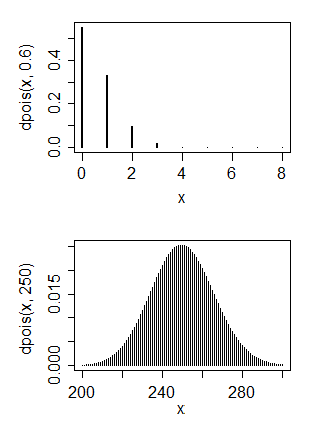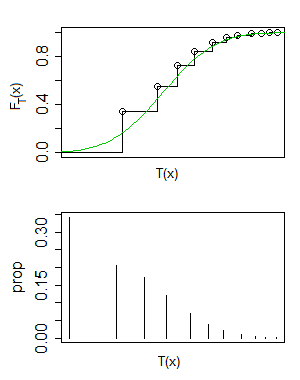- What's depicted appears to be (grouped) continuous data drawn as a bar chart.
You can quite safely conclude that it is not a Poisson distribution.
A Poisson random variable takes values 0, 1, 2, ... and has highest peak at 0 only when the mean is less than 1. It's used for count data; if you drew similar chart of of Poisson data, it could look like the plots below:
$\hspace{1.5cm}$
The first is a Poisson that shows similar skewness to yours. You can see its mean is quite small (around 0.6).
The second is a Poisson that has mean similar (at a very rough guess) to yours. As you see, it looks pretty symmetric.
You can have onethe skewness or the otherlarge mean, but not both at the same time.
- (i) You cannot make discrete data normal; if you have the ungrouped values, you can possibly do something, but even then often when people seek to transform their data it's either unnecessary or their underlying problem can be solved a differentnormal (generally better) way.--
[WithWith the grouped data, withusing any monotonic-increasing transformation, you'll move all values in a group to the same place, so the lowest group will still have the highest peak - see the plot below.] In the first plot, we move the positions of the x-values to closely match a normal cdf:
Why
In the second plot, we see the probability function after the transform. We can't really achieve anything like normality because it's both discrete and skew; the big jump of the first group will remain a big jump, no matter whether you push it left or right.
(ii) Continuous skewed data might be transformed to look reasonably normal. If you have raw (ungrouped) values and they're not heavily discrete, you can possibly do something, but even then often when people seek to transform their data it's either unnecessary or their underlying problem can be solved a different (generally better) way. Sometimes transformation is a good choice, but it's usually done for not-very-good reasons.
So ... why do you want to transform it?
